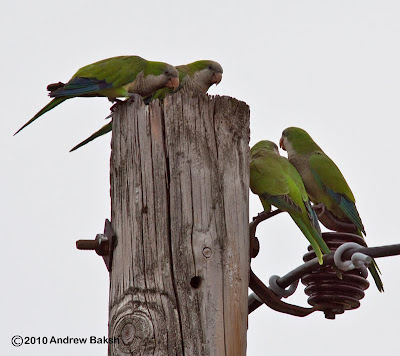Black-bellied Whistling Duck as seen from bench # 7 on the West Pond.
Another terrific day in the field and another rarity at Jamaica Bay Wildlife Refuge Queens NY. This one, was a Black-bellied Whistling Duck (Dendrocygna autumnalis)found by birders Isabel Conte and Ann Lazarus this afternoon on the West Pond around bench number 7. Many birders responded to the alert and phone calls that went out. I received my call from my friend Shai Mitra while I was all the way down at the North East end of the East Pond and so did the schlep back over to the West Pond. Thankfully, the bird was there and was still loafing around when I departed around 6:45 p.m. The bird had moved over further to the right of bench number 6 after being harassed by a Great-Black-backed Gull.
During the observation of this duck by the many birders the discussion on hind toes came up and so I tried to get good photos of the toes for documentation. (Updated 8-2-2010) When I published this post on Saturday, I did not elaborate on my comments on the "Hind Toes"...here is a bit more on why the toes were important.
What I gathered from the more experienced birders that day, is that farmers or collectors sometimes clip the toes and or clip the wings of ducks like these. Having the toes intact is just one way of determining if the duck was domesticated or wild. With this duck, the toes were intact and the wings did not appear to be clipped. All positives for when the discussion on whether to accept this as a rare and legitimate sighting takes place. If accepted, this would only be the second record for NY state, with the 1st occurrence (also pending acceptance) taking place earlier this year in Brewerton NY.
Here are some photos from this afternoon.
Note that the hind toe is intact on this bird.
Black-bellied Whistling Duck at Jamaica Bay Wildlife Refuge.
Black-bellied Whistling Duck at Jamaica Bay Wildlife Refuge.
Note that the hind toe is intact on this bird.
Knowing that I wanted to photograph the hind toe, the BBWD obliged.
Some of the BBWD observers on the West Pond.
Tags:


































